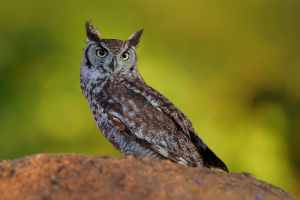The Common Kingfisher, known scientifically as Alcedo atthis, is a small but striking bird renowned for its brilliant plumage and remarkable hunting abilities.
Found across Europe, Asia, and North Africa, this vibrant bird is often seen near rivers, lakes, and coastal areas where it feeds on fish and aquatic invertebrates.
Physical Characteristics
The Common Kingfisher is easily recognizable due to its dazzling colors. Its feathers exhibit a vibrant blue on the upper parts, while its underparts are a warm orange-brown. The contrast between these colors creates a stunning visual effect that makes the kingfisher a favorite subject for photographers and nature lovers. This small bird typically measures about 16 to 19 cm (6.3 to 7.5 inches) in length and has a wingspan of 24 to 26 cm (9.4 to 10.2 inches).
Habitat and Distribution
The Common Kingfisher prefers habitats that offer clear, slow-moving waters rich in fish and other aquatic life. It can often be found near rivers, lakes, ponds, and estuaries, where it hunts for food. This bird is also attracted to well-vegetated areas along the water's edge, as these provide cover and nesting sites.
Feeding and Hunting Behavior
The Common Kingfisher is an adept hunter, primarily feeding on small fish, crustaceans, and aquatic insects. It employs a unique hunting technique that involves perching on a branch or overhanging vegetation and scanning the water below for prey. Once it spots a fish, the kingfisher dives into the water with remarkable speed and accuracy, using its sharp beak to catch the fish.
Nesting and Breeding
During the breeding season, which typically occurs in spring and summer, Common Kingfishers become more territorial and vocal. They create nests in burrows dug into riverbanks or steep banks, often near water sources. The female lays a clutch of about 5 to 7 eggs, which are incubated for around 3 weeks.
Observing the Common Kingfisher
These birds are often found in pairs during the breeding season, making them relatively easy to spot near their preferred habitats. The best time to observe kingfishers is during the early morning or late afternoon when they are most active. Patience is key, as you may need to wait quietly near water sources to catch a glimpse of these vibrant birds in action.
Conservation Status
The Common Kingfisher is classified as a species of Least Concern, meaning it is not currently at significant risk of extinction. However, its populations can be affected by habitat loss, pollution, and changes in water quality. Conservation efforts are essential to ensure the long-term survival of this beautiful bird.
The Common Kingfisher is a stunning example of nature’s artistry, combining vibrant colors with exceptional hunting skills. Its presence in our ecosystems highlights the importance of maintaining healthy waterways and natural habitats.Whether you’re an avid birdwatcher or simply someone who appreciates nature, the Common Kingfisher is a remarkable species that deserves our attention and protection!
Common Kingfisher. Bird catching a fish | David Attenborough's opinion.
Video by Artur Homan


